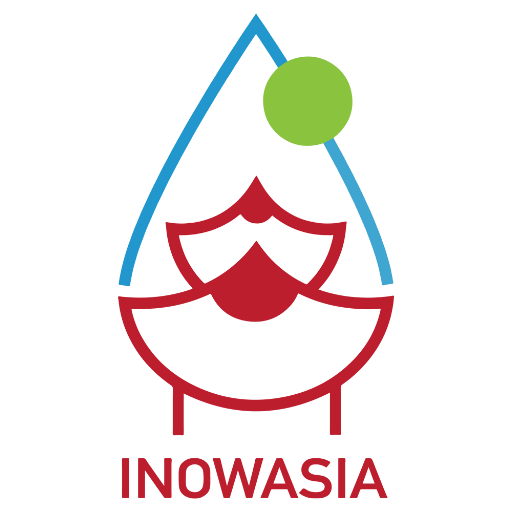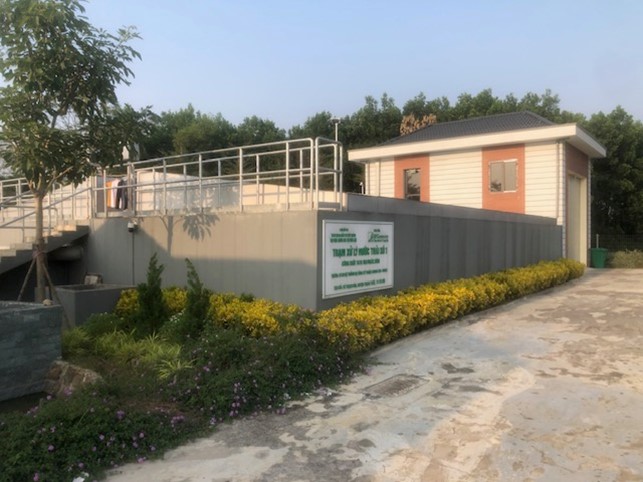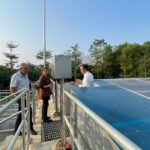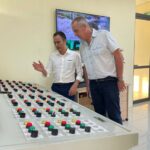

WOLL at HUS and architectural planning management in Vietnam
Building Nature Based Solutions (NBS) into water-related projects represents a massive opportunity for water economy and environmental sustainability. It represents a key for human wellbeing and development with healthy Nature and ecosystems, to achieve the Sustainable Development Goals (SDGs).
INOWASIA is convinced we need to work with companies, band and other financial institutions and local stakeholders to put in practice NBS for water saving projects. Through this way, we can deliver impacts that reduce pressure on ecosystems, drive resilience and sustainability for both people and nature, while generating positive financial returns for communities and investors. It should be the role of the INOWASIA’s APC (Academic and Professional Committee).
The saving water technologies and practices should be put in action as soon as possible, and the INOWASIA’s WOLLs (Water-oriented living lab) allows to engage all stakeholders together on R&D actions (Research and Development).
0n 22nd November 2023, Dr Tran Dinh Trinh from the VNU Key Lab. of Advanced Materials for Green Growth (University of Science, Vietnam National University, Hanoi, Vietnam) and member of #INOWASIA, representative of HUS/VNU, has organized a visit of the INOWASIA WOLL of HUS at Hoa Lac dedicated to waste water treatment and reuse through low energy consumption.
Two technologies are used in parallel.
First, for the domestic waste water from inhabitants building on the Campus of Hoa Lac University, a first experimental vertical constructed wetland has been built last year. It’s two caves of gravels with a layer of charcoal at subsurface and water by wastewater after a first sedimentation tank. The watering is done by the surface per gravity and the purpose is test the capacity of nanomaterials to treat waters for possible reuse, in relationship with the soil micro and macrofauna in the gravels of the filtering part.



Second, a waste water treatment plant (WWTP) has been built on the same Hoa Lac Campus to manage the water treatment of all the laboratories. This WWTP is entirely managed with solar electricity power.



The group visit was very pluridisciplinary. Dr Tran Dinh Trinh is a chemist of innovative materials, Dr Hermine Huot from IRD is a geochemist and soil scientist dealing with technosols, Dr Nguyen Thai Huyen from HAU (Hanoi Architectural University) is an architect dealing with blue, green and grey frames in urban planning, and Dr Didier Orange from IRD is an ecohydrologist, dealing with the biodiversity role in the water saving. The WOLL of Hoa Lac has invited professionals of diverse horizons to work on their posture to develop and strengthen their listening skills and empathy, put aside their desire to apply their own concept and leave more room for support in their relationships with possible R&D oriented on innovative water treatment through biodiversity enhancement, soils and materials properties and social acceptation by the inhabitants and the urban planners.

Sources: https://inowasia.com/livinglabs/
December 18, 2023
INOWASIA is an Erasmus + Capacity Building Higher Education project that promotes a joint action of 11 organisations across 5 countries (Cambodia, Laos, Vietnam, France and Spain) to train a new generation of water professionals in Southeast Asia. More info
This project has been funded with support from the European Commission. This publication reflects the views only of the author, and the Commission cannot be held responsible for any use which may be made of the information contained therein.
Project Number: 619225-EPP-1-2020-1-ES-EPPKA2-CBHE-JP
Let's Talk!
All Rights Reserved by INOWASIA 2021

